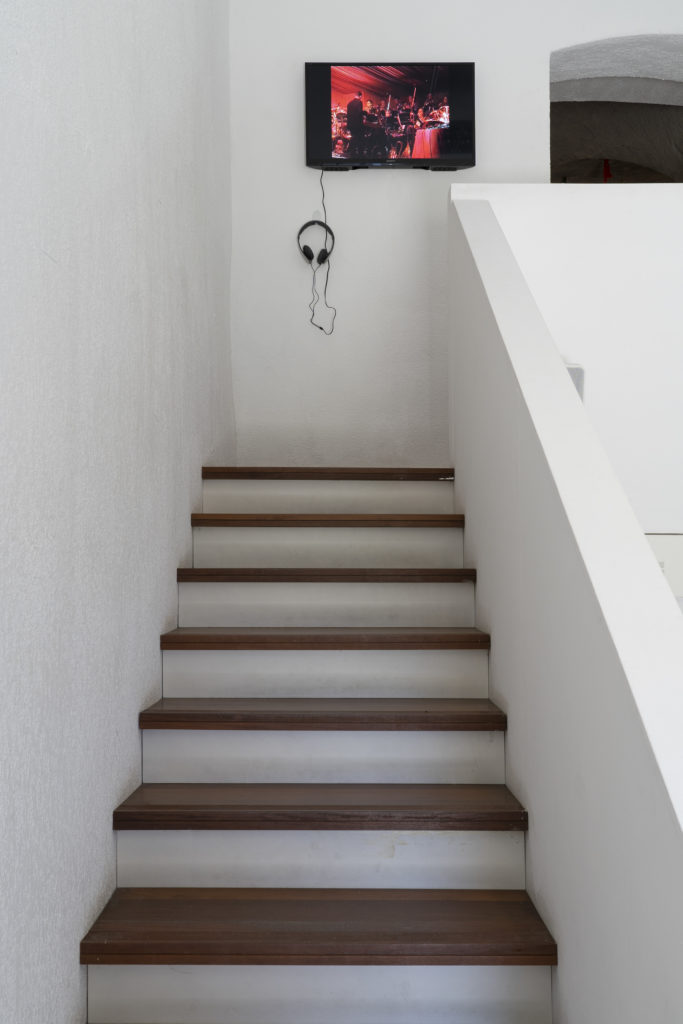
Music is often what remains after the party — the last echo of a carefree moment before silence sets in. Fin de party lingers on this fragile transition, from sonic chaos back to reality, between fading euphoria and emerging calm. The exhibition explores music as a trace, a lingering rustle, a breath that struggles to fade away.
Music is no longer seen as mere play, but as a territory where the remnants of collective joy intertwine with the shadow of an inevitable ending. Far from academic rigor or the myth of virtuosity, music reveals itself here in its most instinctive form, on the edge between jubilation and disillusionment.
Camille Blatrix’s music stage shaped like a Petit Lu biscuit invites a free and uninhibited practice. Sounds still resonate: Ziad Antar’s children repeat a comical “Wa,” Meriem Bennani’s anthropomorphic architectures burst into song, Charlemagne Palestine’s stuffed animals pile up in joyful chaos, and Pipilotti Rist butchers Chris Isaak’s Wicked Game in a gesture as liberating as it is iconoclastic.
Then, the music slowly fades. Davide Balula places a solitary turntable — the final remnant of a party already past — above which floats a balloon, suspended like the last echo of the tumult. We cling to memories, watch videos from the night before on YouTube, leave a melancholic comment with Kamilya Kuspanova, and head off to bed.